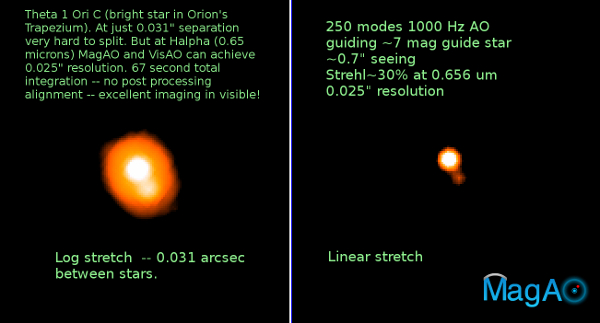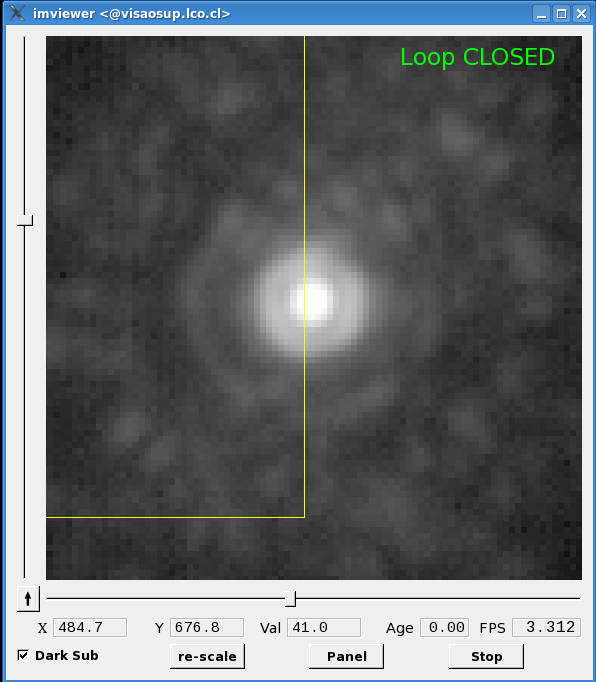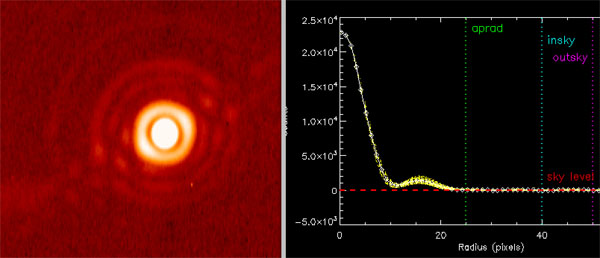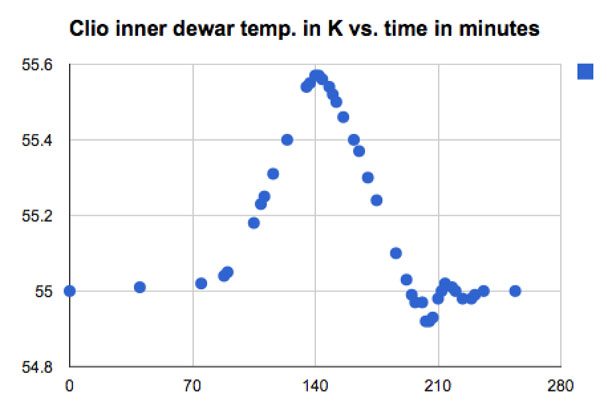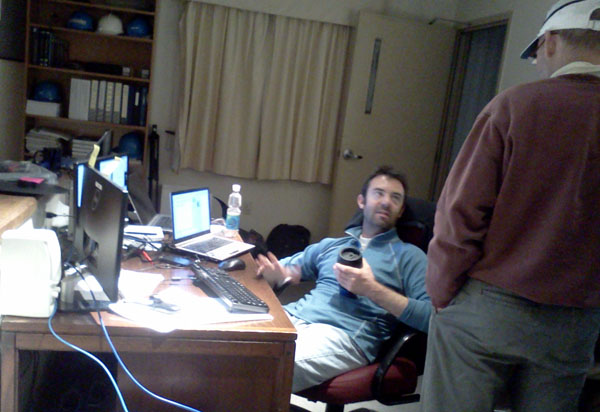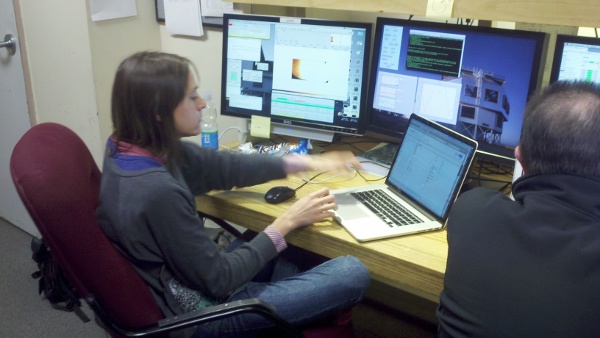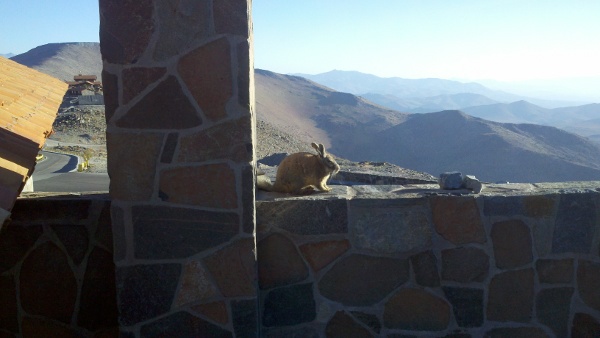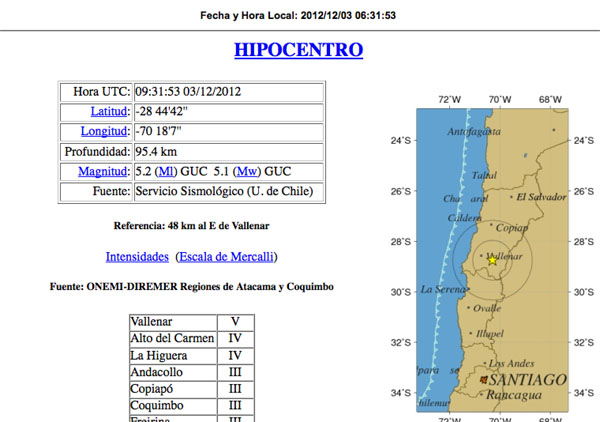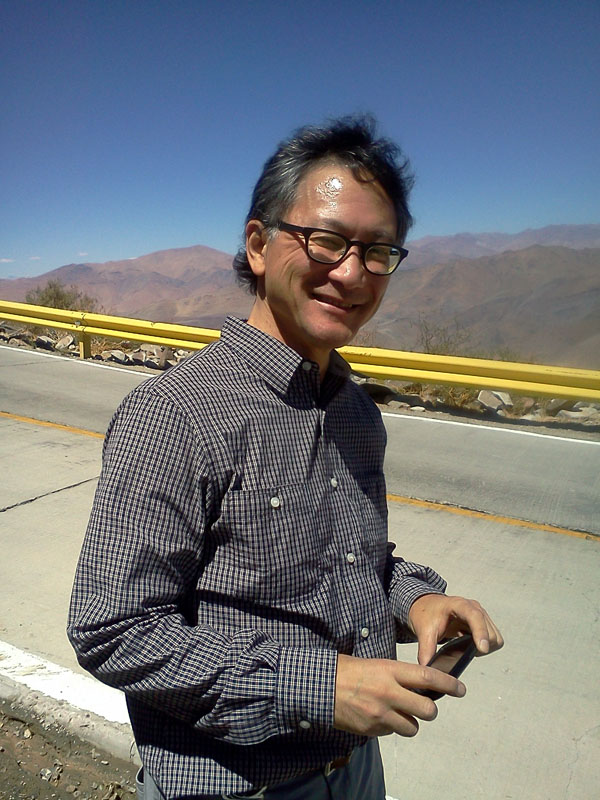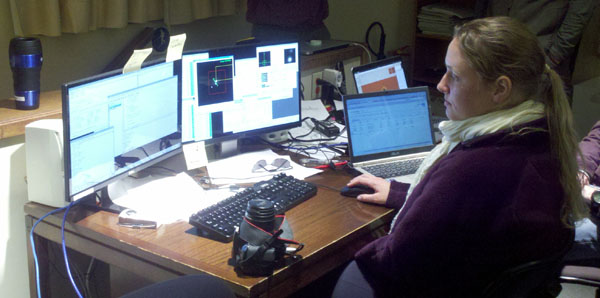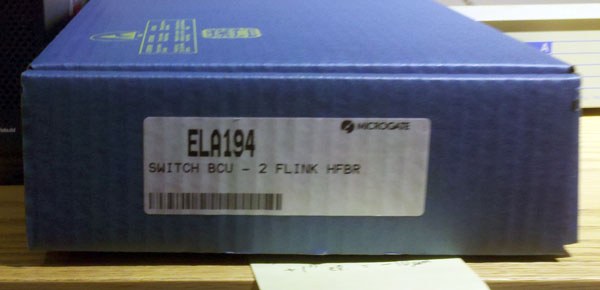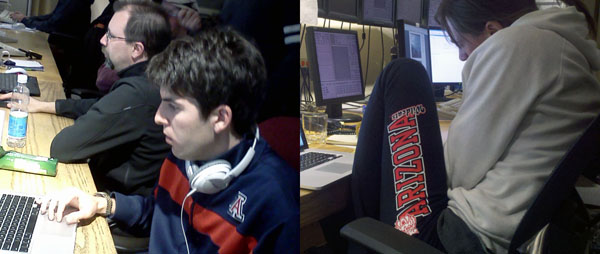For all of the non-astronomers out there (hi dad!) who have been patiently wading through our blog because they love us, here is a very brief crash course on AO. We thought that this might help you to understand why what we’re doing here at MagAO is so exciting.
The first important concept is that, in an ideal world, the resolution of telescope images is directly proportional to the wavelength of light you’re looking at and inversely proportional to the diameter of your telescope. In other words, the formula for resolution is:
resolution = wavelength / telescope diameter
Small resolutions are the best (we generally call this “high resolution” when we’re talking about cameras or TVs), so you can improve by either (a) going to a bigger telescope (increase diameter = divide by a larger number = smaller resolution) or (b) going to shorter wavelength light.
The first and even second and third generation AO systems all operate on infrared light, which has relatively long wavelengths. We are the first 8m-class telescope system to push to shorter wavelength visible light (hence the name of our blog, VIS-AO). If there is a resolution advantage to shorter wavelength light (visible over infrared), why did/does anyone bother with infrared AO?
The reasoning comes down to another formula, this time the formula for the atmospheric coherence length (also known as the Fried parameter). The official definition of this quantity is “the area over which an rms wavefront aberration is less than 1 radian”, which is a little opaque so let’s break it down. RMS is “root-mean-square” and is essentially an average. “Wavefront aberration” is the amount that a wave’s position deviates from perfection (perfectly flat, which is why we’re always talking about “flat wavefronts”). The atmosphere is the culprit here, bending our wavefronts from a perfectly flat shape.
One way to think about the Fried parameter is as the size over which you can expect the atmosphere to “behave” the same. The Fried parameter is proportional to wavelength to the 6/5 power. This means that at infrared (long) wavelengths, the Earth’s atmosphere is coherent over bigger patches. So if you want to correct at visible (short) wavelengths, you have to correct on smaller spatial scales. Adaptive secondary mirrors (ASMs), which are physically large compared to the tertiary mirrors used in other AO systems, can fit enough actuators on the back to correct at the necessary spatial scales for VisAO. In short, VisAO is hard, and we are heroic individuals!
The great irony, no matter what wavelengths you’re using for your AO correction, is that light from astronomical objects spends the vast majority of it’s journey to Earth with perfectly flat wavefronts. It’s only in the last 300 miles, the part where it’s traveling through the Earth’s atmosphere, that it becomes distorted. 300 miles seems like quite a distance on the surface (hah!), but it’s actually only a teeny tiny fraction of the entire journey made by light from an astronomical object.
In fact, let’s quantify that. If we’re looking at the very nearest star, Alpha Centauri, its light will have taken about 4.5 years to reach us. At a speed of 186,000mi/sec, that’s:
4.5yr x 186,000mi/sec x 3600sec/hr x 24hr/day x 365days/yr = 26 trillion (26,000,000,000,000) miles
to get to us. But the Earth’s atmosphere, which does all of the wavefront bending, is only 300 miles thick, so the portion of the light’s journey that is spent in the atmosphere is only 300/26 trillion, or 0.00000000001 (=0.000000001%).
That means that 99.999999999% of the journey was complete before the light found itself in need of our AO services, and that was for the very nearest star. If we’re looking at more distant objects, that fraction only increases!
This, of course, is why people put telescopes in space. If you don’t bother with those last 300 miles, then you don’t have to correct your wavefronts at all.
So why do we put telescopes on the ground? Well, there are lots of reasons. My two favorites are (1) you get a lot more bang for your buck on the ground and (2) you can upgrade the technology on a ground-based telescope whenever you want, so it will never become obsolete.
Hope that helps clarify what we’re up to a bit. Thanks for sticking with us!

